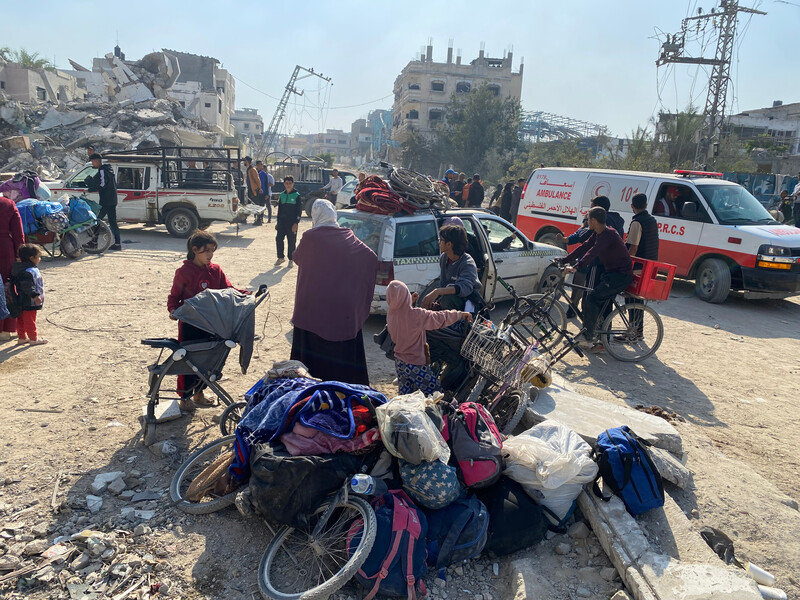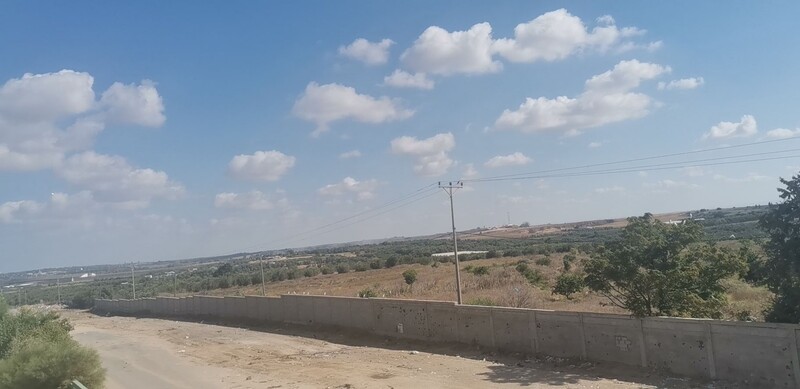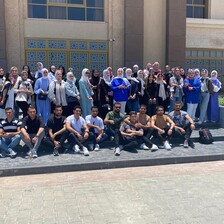The Electronic Intifada 29 December 2024

Gaza’s north has been devastated after a nearly three-month long intensive Israeli assault. Here families try to bring their belongings with them as they are forcibly displaced from Beit Hanoun.
APA imagesThe Gaza Strip is a tiny coastal territory.
Most people here were forcibly displaced in 1948 from their homes, villages and lands in what became Israel, or, as I prefer to call it, this distant Palestine.
Of course, this distant Palestine is just there, barely a stone’s throw away.
This reality was brought home to me in October 2022, when I went to the farthest north of Gaza, Beit Hanoun, as part of a university project.
It was my first ever trip to Beit Hanoun and I was joined by a team of fellow students from al-Azhar University, known as Kiwi Media, working on a project to showcase the beauty of the Gaza Strip, as well as highlight its important landmarks.
My role was to translate the videos produced into English.
Beit Hanoun, with its expansive farmland and widely spaced houses, is very different from Gaza City where I lived. The abundance of trees and natural beauty creates a calm and picturesque environment.
My fellow students and I explored nearly every part of Beit Hanoun that day. This included a visit to an agricultural school that stood very near the 1948 boundary.
From the school’s rooftop, I reflected on the stunning view before me. I stood just a short distance from the Palestine that I had long envisioned in my childhood and from where around 80 percent of Gaza’s population were displaced in 1948, including my own family.

That distant Palestine.
Despite the prohibition on photography, I secretly captured the moment with my phone.
As I stood looking, I experienced a peculiar feeling. Despite the proximity, it felt impossibly far away. It seemed as though I were gazing upon the unattainable, this distant Palestine.
A growing distance
At the end of our trip, we gathered in an olive orchard to share a meal. There is something deeply special about being Palestinian in a place surrounded by olive trees.
More than a year after that meal, Salah al-Din Street – which traverses Gaza from the Erez checkpoint in the north to the Rafah crossing in the south – is devastated.
Beit Hanoun is devastated. Orchards lie abandoned and destroyed. Factories and houses have been reduced to rubble. The burned out shells of cars dot the roads.
There’s only desolation and despair.
The northern Gaza Strip now feels distant both geographically and temporally. I was displaced from my home in Gaza City on 13 October 2023, first to the south and then, in February, to the central Gaza Strip.
Now, if I try to go north, I will arrive at the Netzarim corridor and checkpoint, an area bisecting Gaza seized by the Israeli military that is so perilous, it has become known as the “axis of death.”
I was near that checkpoint on 3 December this year. That, I calculated, meant I was 424 days away from my beautiful home in Gaza City.
Israel is proceeding with a plan, which by all accounts, seeks to empty the north of its residents and seize the entire territory.
Can this plan succeed?
Palestinian writer Mourid Barghouthi once put it this way: “The occupation soldier occupies a piece of land that he confiscates, referring to it as ‘here.’ In contrast, all that remains for me, its exiled owner, is to designate it as ‘there.’”
I now gaze at “there.” The distance has expanded significantly beyond what we in Gaza were once accustomed to.
Aya Al-Hattab is a writer and translator in Gaza.



